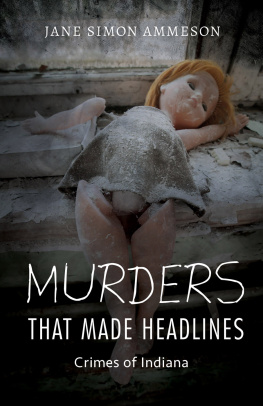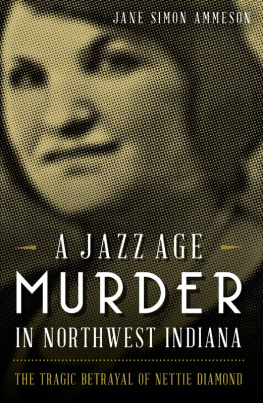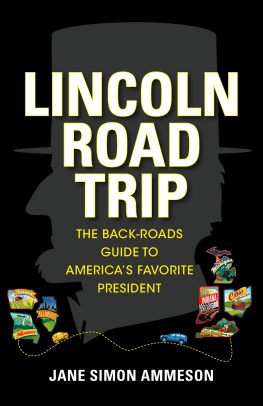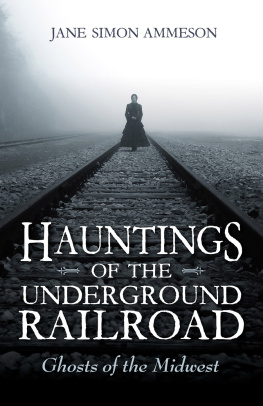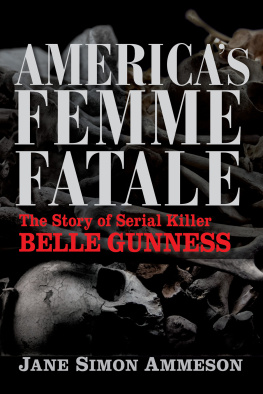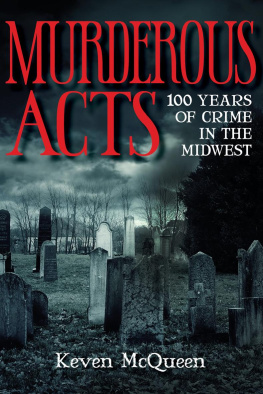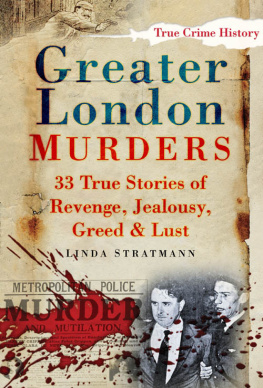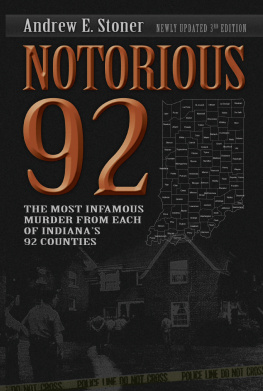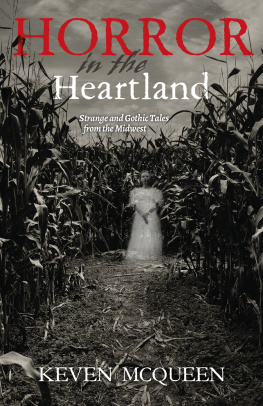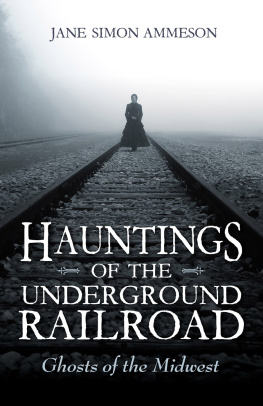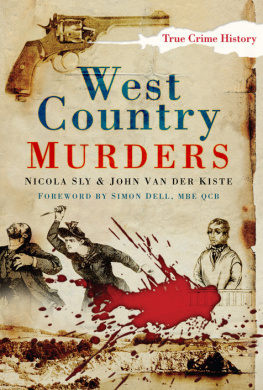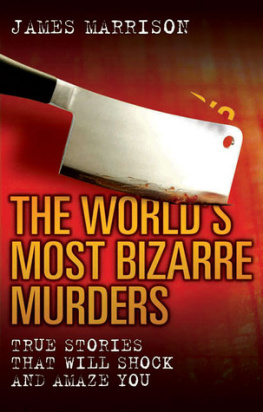
MURDERS
THAT MADE HEADLINES

Cutler Funeral Home in La Porte, Indiana, is still in business more than a century after the Belle Gunness murders. The remains of women and children who would be buried locally were carried in hearses pulled by white horses; black horses pulled the bodies of men, many of whom had expected to marry a beautiful widow and found Belle instead. Photo courtesy of the La Porte County Historical Society.
JANE SIMON AMMESON
MURDERS
THAT MADE HEADLINES
CRIMES OF INDIANA
INDIANA UNIVERSITY PRESS
This book is a publication of
Indiana University Press
Office of Scholarly Publishing
Herman B Wells Library 350
1320 East 10th Street
Bloomington, Indiana 47405 USA
iupress.indiana.edu
2017 by Jane Simon Ammeson
All rights reserved
No part of this book may be reproduced or utilized in any form or by any means, electronic or mechanical, including photocopying and recording, or by any information storage and retrieval system, without permission in writing from the publisher. The Association of American University Presses Resolution on Permissions constitutes the only exception to this prohibition.
The paper used in this publication meets the minimum requirements of the American National Standard for Information SciencesPermanence of Paper for Printed Library Materials, ANSI Z39.48-1992.
Manufactured in the United States of America
Cataloging information is available from the Library of Congress.
ISBN 978-0-253-03126-6 (cloth)
ISBN 978-0-253-02983-6 (paperback)
ISBN 978-0-253-03127-3 (ebook)
12345222120191817
CONTENTS
INTRODUCTION
WHEN PEOPLE ASKED what I was working on and I told of days reading newspaper accounts, culling death certificates and trial transcripts of old murders, and learning about such products as the wonderfully named Rough on Rats, they reacted in two distinct ways. Some were rather appalled that I revel in news articles about midnight exhumations, beheadings, and running a burial service for murderers who need a place to hide their bodies (a true niche business). Others were just as fascinated as me.
The settings for the murders I included in this book take us from the late 1850s to the Jazz Age; from travel by horse and buggy and riverboats to Hudson sedans and Cadillacs; from women wearing long dresses to flappers in short skirts; from gas lamps to electricity. But the passions that led to murder are similar to what we read and hear about today: unwanted babies, financial gain, or an impediment to marrying. Indiana was also the locale for one of the largest mass murders in the country, committed by a woman no less. Juries were just as whimsical and unpredictable then as we think of them today.
But there were differences too.
Lynching was still abided; authorities often looked the other way and perpetrators were not punished. Although I had known that the lynching of African Americans continued long into the twentieth century in the South, I was amazed that lynching occurred with regularity in Indiana, mainly Southern Indiana, until the early 1900s. There was even a double lynching as late as 1930 in Marion. It wasnt just blacks who were given that swift injustice. More whites than blacks were lynched in Indiana by about three to one and it was often sanctioned by authorities. Even some of the reporters of smaller town newspapers at the time watched on the lynchings, along with crowds of townspeople. Some took a jocular tone toward the lawlessness of the practice in their reporting.
Indiana had a governor who rescinded previous antilynching laws and was himself one of the notorious White Caps, a group of men who broke into jails to bring justice to those they thought deserved it or maybe just those they didnt like. Townspeople seemed to enjoy these little midnight soirees and descended on the bonfires or hanging trees to watch, one assumes, with pleasure while someone they knew killed another person they knew. Often, if justice had been allowed to take its course, they would have learned the person was innocent. But their philosophy was why wait.
Before the laws changed allowing medical students access to cadavers, there was a very lucrative underground (excuse my pun) business for resurrectionistsmen who didnt mind the dirty work of digging up bodies to sell. When the police decided to crack down on body snatching back in the late 1800s, medical schools, needing to dispose of their illegal cadavers, started dumping them on the streetsnot the sight youd easily imagine today in glittery and trendy downtown Indianapolis, a place filled with great restaurants, sports complexes, stores, hotels, and condos.
For Carrie Selvage, whose body disappeared in Indianapolis in 1900, the crime was at first blamed on one of the many rival groups of remnant men. Body snatchers didnt care whether their catch was rich, poor, young, or old, it just had to be fresh. One of the men was the father of future president William Henry Harrison, at the time an up and coming Indianapolis attorney, and the other his cousin. Both were found intact in medical schools. The Masons exhumed (without a permit as far as I can determine) a fellow Mason who they thought had been poisoned by his wife. His stomach was removed and shipped in a jar by boat to Louisville. And yes, they found strychnine. Charles Koesterss two children, wife, and parents were all dug up, though by medical experts in this case, to see if they had been poisonedthey had. One fascinating factthe autopsy of Charless mother was done in an upstairs bedroom of her home.
Which leads me to something else I learned while writing this bookrecord keeping. Marriage records in Indiana date back to 1788 when they were required for those residing in the Northwest Territories. The recording of births wasnt mandatory until 1882. Recording deaths began in a few Indiana cities as early as the 1870s, but the first law requiring county registration of death was passed in 1882. It wasnt until 1900 that all deaths were to be registered with the state. Compliance with the law varied until 1920 when deaths that occurred were always recorded. Imagine that. Tired of Harry after meeting the new horse and buggy doctor in town? Slip him a little arsenic and get him in the ground as fast as you can.
Poisoning, I also learned, must be addictive because poisoners seem never to have stopped at one (though thats maybe why they got caught).
People often pine for the good old days when life was simple, but believe me it wasnt.
Minnie Mabbitt went to trial along with her two brothers for the killing of her young babe. Years earlier one of the brothers and her father helped lynch her sisters lover. Now theres a Jerry Springer show for you.
As everyone who dives deep into data in a time where records were written in the old-fashioned Palmer style with big and little loops knows, documents can be difficult to decipher and names seem to mysteriously change as does other pertinent information. Take Catharine Reiff, the Hoosier Lucretia Borgia. Her maiden name is spelled in various ways such as Shoemaker and Schumacher, her first name always with an a where most of us would put an e. But when I found her tombstone (thank you, Find-A-Grave), her name was etched on the stone as Rachel Katherine Schumaker. Rachel? I had never seen that name on any of the numerous legal documents bearing her nameand believe me there were a lot.
Do you know how many variations there are of the name Herskovitz? Nettie D. Sachs Zauderer Herskovitz Golden Diamonds husband, Dr. Samuel Herskovitz, spelled his name one way, and his brother, an attorney who lived in the same town, spelled his as Hershcovitz. Then theres Herscovitz, Hershcowitz, Herskovitz, Hershkovitz, and on and on. I discovered Netties first husband (or was it second, were still not sure) when a genealogist at the Allen County Public Library took Zander, the only spelling I had at the time, and let Soundex spit out other alternatives. Suddenly I had Zauder then Zauderer and bingo! But to make matters more confusing, Zanderer is the way it is spelled in her divorce proceedings. Sigh.
Next page
